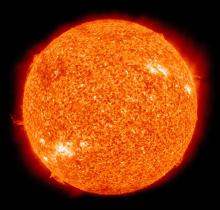Listen to today's episode of StarDate on the web the same day it airs in high-quality streaming audio without any extra ads or announcements. Choose a $8 one-month pass, or listen every day for a year for just $30.
You are here
Maria Mitchell
On a clear autumn night in 1847, Maria Mitchell excused herself from a party at her father’s house. The 29-year-old librarian then climbed onto the roof and scanned the skies with a telescope. Her observations revealed a small, fuzzy object she hadn’t seen before: a comet.
At the time, discovering a comet was a big deal. So Mitchell’s find brought many accolades, including a gold medal from the king of Denmark. The discovery also made her a celebrity, and kicked off a career in which she became the first American woman to serve as a professional astronomer.
Mitchell was born 200 years ago tomorrow, in the whaling village of Nantucket. Her parents were Quakers, who believed that both boys and girls should get an education. So Maria attended school during the day, and at night, her father taught her astronomy.
After she discovered “Miss Mitchell’s Comet,” the Navy’s Nautical Almanac Office hired her to help with astronomical calculations. And she became the first female member of the American Academy of Arts and Sciences. In the 1850s, she became the first woman ever to enter the Vatican Observatory -- although it took a couple of weeks of cajoling to get her inside.
At the end of the Civil War, Matthew Vassar was planning a new women’s college in Poughkeepsie, New York. And the first faculty member he hired was Maria Mitchell, making her the first female astronomy professor in the country. We’ll have more about that tomorrow.






